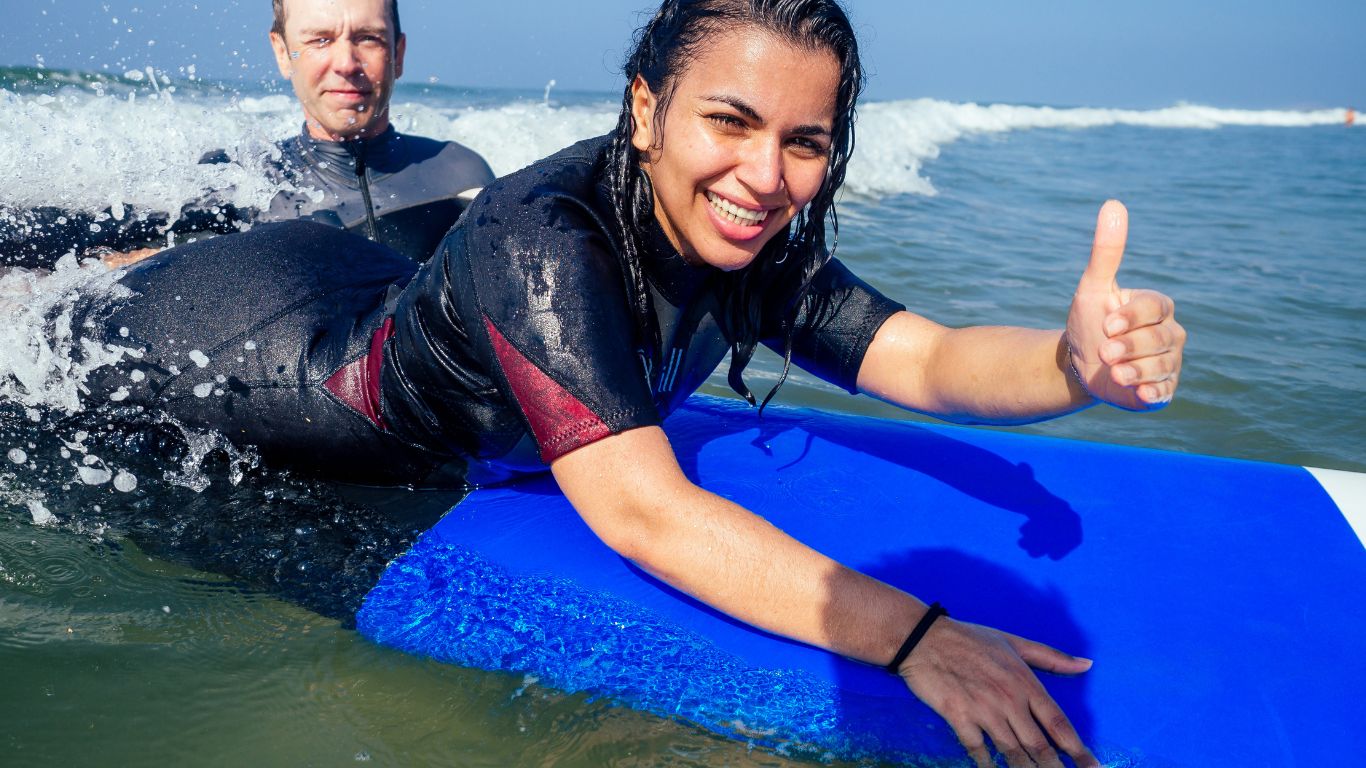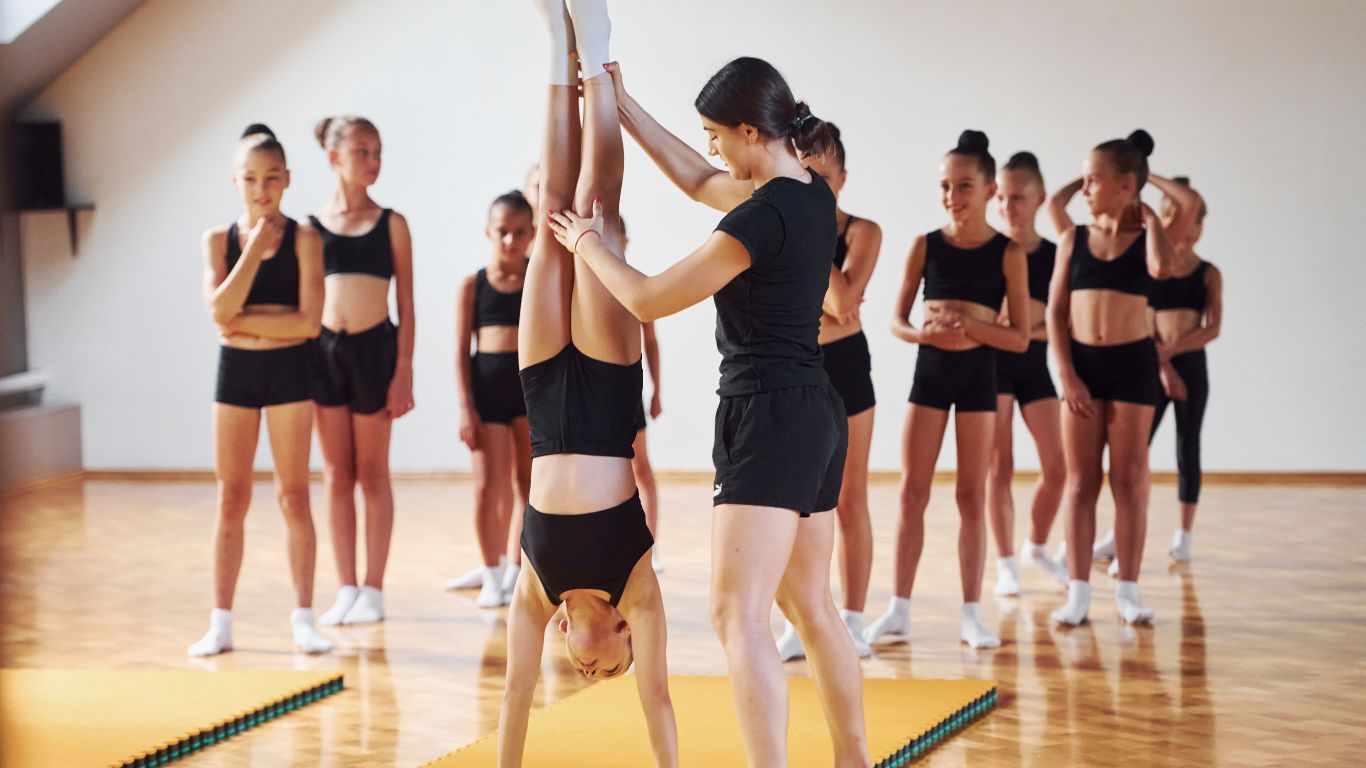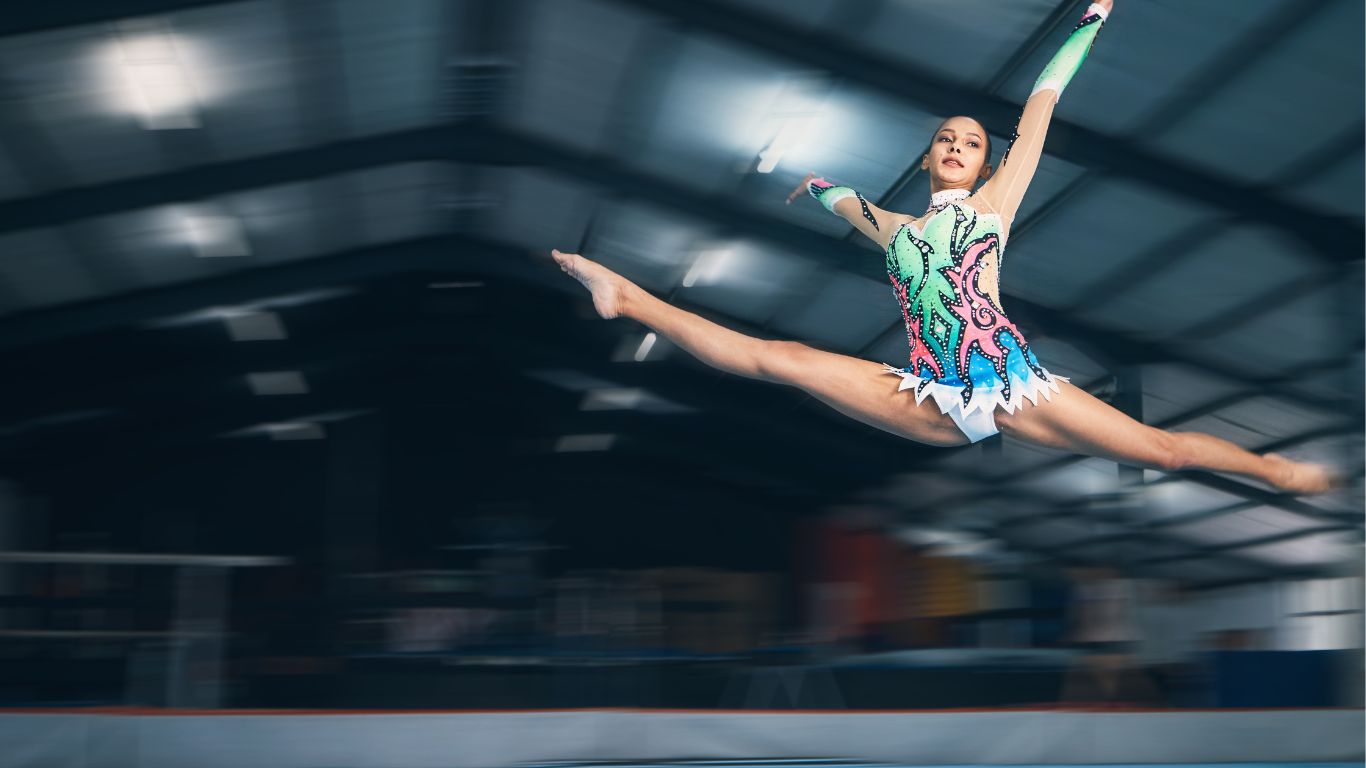Have you ever dreamed of riding the waves like a pro surfer, feeling the rush of adrenaline as you glide across the water? Learning how to surf can be an exciting and rewarding experience for anyone who loves the ocean and craves adventure. Whether you’re a complete beginner or have some knowledge of a board, mastering the art of surfing takes time, practice, and dedication. In this article, we’ll explore the basics of surfing, from understanding the anatomy of a surfboard to navigating the waves and mastering essential techniques to help you become a confident and skilled surfer.
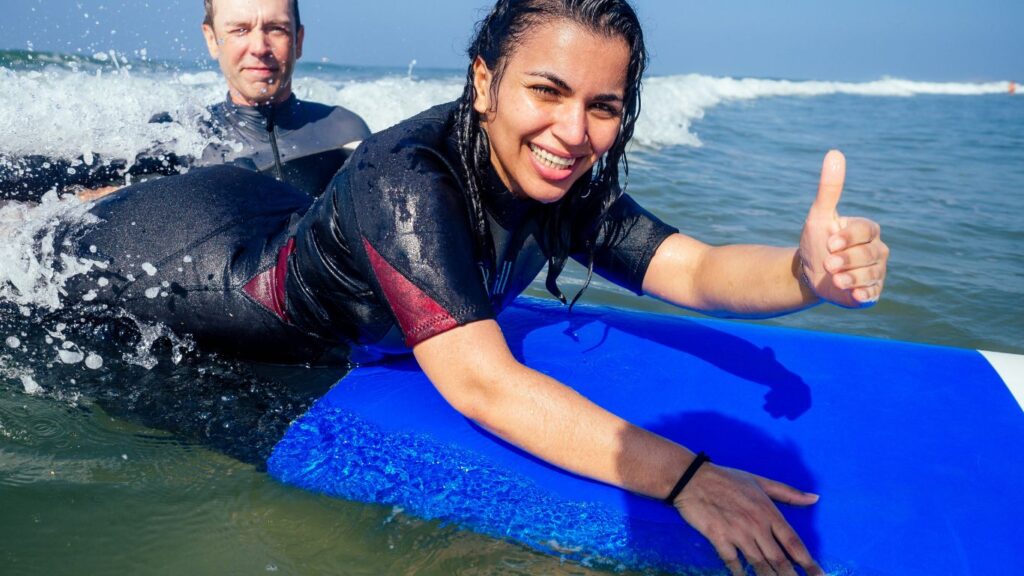
Surfing is more than just a sport – it’s a way of life that connects you to nature and gives you a sense of freedom and empowerment. As you paddle out into the ocean and catch your first wave, you’ll feel a sense of joy and accomplishment like no other. Whether you’re looking to challenge yourself physically and mentally or enjoy the thrill of being out in the water, surfing offers a unique and exhilarating experience that can’t be matched. So grab your board, wax it up, and get ready to ride the waves as we dive into the world of surfing and discover how you can become a true surfer at heart.
Choosing the Right Surfboard
Choosing the right surfboard can make all the difference in your surfing experience. There are a few key factors to consider when selecting a surfboard that will work best for you.
First and foremost, consider your skill level. If you are a beginner, you should start with a more giant, more stable board. A longboard is an excellent option for beginners as it offers more stability and buoyancy, making it easier to catch waves and stand up on the board. As you gain more experience and confidence in the water, you can transition to a shorter board that offers more manoeuvrability.
Next, think about the type of waves you will be surfing. If you are going to be surfing smaller, more mellow waves, a fish or funboard may be a good choice. These boards are shorter and wider, making them easier to paddle and catch waves on. For more giant, more powerful waves, a performance shortboard may be more appropriate. These boards are typically longer and narrower, allowing for quicker turns and manoeuvres on the wave.
Consider your size and weight when selecting a surfboard. A larger, heavier surfer will generally need a more giant board with more volume to provide enough buoyancy and stability in the water. Conversely, a smaller, lighter surfer may opt for a smaller board with less volume for easier manoeuvrability and control.
Another essential factor to consider is the board’s construction and materials. Traditional fibreglass boards are lightweight and responsive, making them great for experienced surfers looking for high performance. However, they can be fragile and require more maintenance. Alternatively, epoxy boards are more durable and have better floatation, making them a good option for beginners or those looking for a more forgiving ride.
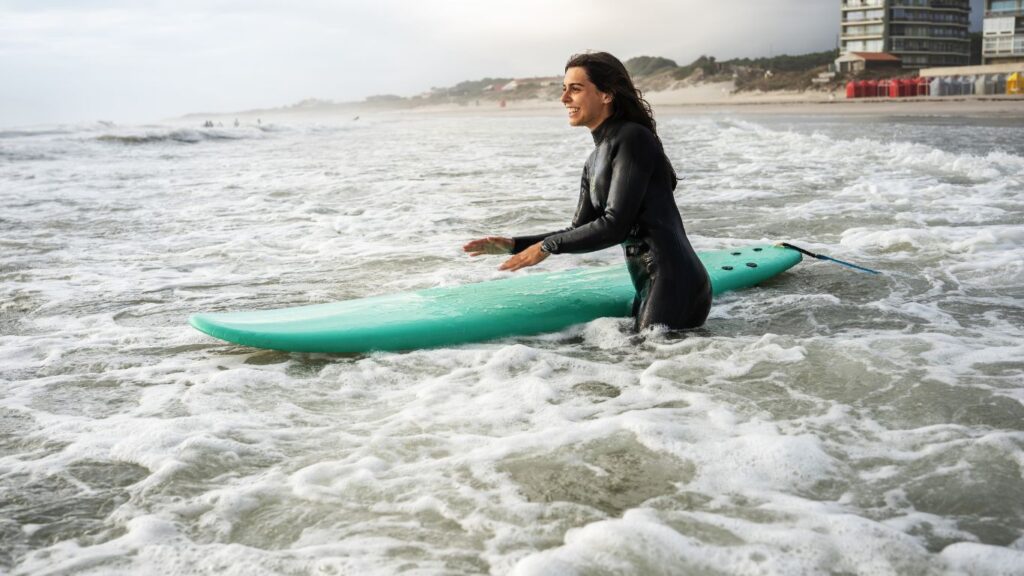
Lastly, think about your budget when selecting a surfboard. Surfboards can range in price from a few hundred dollars to over a thousand dollars, depending on the brand, materials, and construction. If you are starting, you may want to consider purchasing a used board or renting one until you are ready to invest in a higher-quality board.
Overall, choosing the right surfboard is a personal decision that will depend on your skill level, the type of waves you will be surfing, your size and weight, and your budget. Take the time to research and test out different boards to find one that feels comfortable and suits your surfing style. Remember, the right board can make a significant difference in your progression and enjoyment in the water.
Learning Proper Body Positioning
Learning proper body positioning is crucial if you want to master the art of surfing. Having the correct body position not only helps you catch waves more efficiently but also allows you to maintain balance and control while riding the waves.
First and foremost, it’s essential to have a good stance on your surfboard. Start by lying on your stomach on the board, positioning yourself in the centre with your hands on either side of your chest. When paddling, make sure to use both arms to propel yourself forward with solid and controlled strokes. This will help you catch waves and gain momentum as you paddle out to the lineup.
As you transition from paddling to catching a wave, you’ll need to pop up onto your feet in one swift motion. To do this, place your hands on the board slightly below your shoulders and push your upper body up, bringing your feet underneath you in one fluid movement. Remember to keep your knees bent, and your weight centred over the middle of the board to maintain balance.
Once you’re up on your feet, the key is to keep a low and centred stance. Your feet should be shoulder-width apart and parallel to the stringer of the board. Avoid standing too far forward or backward, as this can cause you to lose balance and wipe out. By keeping your weight centred and your knees bent, you’ll have better control over your movements and be able to adjust your position as needed while riding the wave.
Another critical aspect of proper body positioning is your head and eyes. Always look in the direction you want to go, whether it’s down the line of the wave or towards the beach. Your head should be facing forward, with your eyes focused on where you want to turn or manoeuvre on the wave. By keeping your head up and eyes focused, you’ll be able to anticipate changes in the wave and make adjustments accordingly.
In addition to your head and eyes, your arms also play a crucial role in maintaining proper body positioning while surfing. Your arms act as a counterbalance to your movements, helping you stay stable and in control of the wave. Keep your arms relaxed and slightly bent at the elbows, using them to generate speed and make turns when needed.
Lastly, remember your core strength and balance. Surfing requires a solid core to maintain stability and control while riding the waves. Engage your core muscles by keeping your abdomen tight and your back straight, helping you stay balanced and centred on the board. By building up your core strength through exercises like planks and stability training, you’ll be able to improve your body positioning and enhance your surfing performance.
In conclusion, learning proper body positioning is essential for becoming a skilled surfer. By focusing on your stance, head and eye placement, arm movements, and core strength, you’ll be able to ride waves with confidence and control. Practice these techniques regularly and stay patient, as mastering proper body positioning takes time and dedication. Before you know it, you’ll be shredding waves like a pro and enjoying the exhilarating experience of surfing to the fullest.
Mastering Paddling Techniques
When it comes to surfing, paddling is a crucial skill that every surfer must master. Whether you’re a beginner just starting or an experienced surfer looking to improve your technique, mastering paddling techniques is essential for catching waves and navigating the lineup effectively.
The first step to mastering paddling techniques is to ensure that you are using the right equipment. A good quality surfboard that is the right size and shape for your skill level and body type can make a big difference in your paddling ability. Make sure that your board is in good condition, with no dings or cracks that could slow you down in the water.
Once you have the right equipment, the next step is to work on your paddling technique. The key to efficient paddling is using your entire body to propel yourself through the water. Start by lying flat on your board with your chin up and your arms extended out in front of you. Use your arms to pull yourself through the water, keeping your elbows high and your fingers together for maximum speed and efficiency.
Remember to kick your legs in a flutter kick motion to provide additional propulsion and help you maintain balance on your board. Keep your toes pointed and your legs straight, using your core muscles to help power your kicks. By combining your arm strokes with your leg kicks, you can move through the water more efficiently and with less effort.
Another critical aspect of the paddling technique is timing. Pay attention to the rhythm of the waves and the other surfers around you to anticipate when to start paddling for a wave. Timing your paddling correctly can make a big difference in catching waves and avoiding collisions with other surfers in the lineup.
Practice is vital when it comes to mastering paddling techniques. Spend as much time as possible in the water, practising your paddling and honing your skills. The more time you spend on your board, the more comfortable and confident you will become in the water. Experiment with different paddling techniques and find what works best for you and your style of surfing.
In addition to practising in the water, incorporating strength training and conditioning exercises into your routine can help improve your paddling abilities. Building strength in your upper body, core, and legs can help you paddle more powerfully and efficiently through the water. Exercises such as push-ups, pull-ups, planks, and squats can all help improve your paddling strength and endurance.
Lastly, remember proper body positioning and posture while paddling. Keep your head up, shoulders relaxed, and back straight to help reduce drag and increase your speed through the water. Stay focused on your goal of catching waves and navigating the lineup effectively, and remember to have fun in the process.
By focusing on equipment, technique, timing, practice, strength training, and body positioning, you can master paddling techniques and improve your overall surfing experience. With dedication and perseverance, you can become a confident and skilled paddler, ready to take on any wave that comes your way.
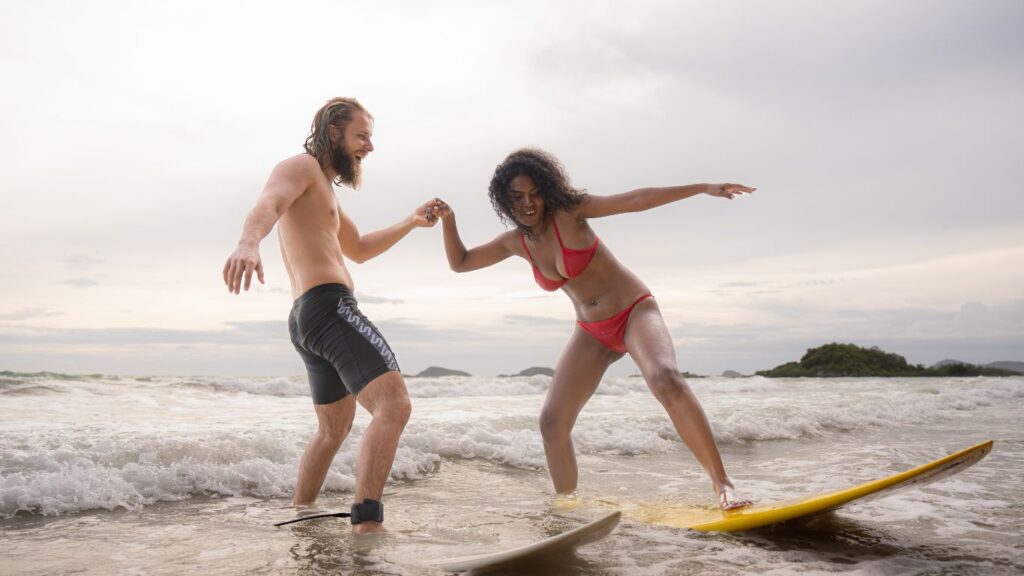
Practice Popping Up on the Board
So you’ve got your surfboard waxed up and your wetsuit on, and you’re ready to hit the waves. But before you can start shredding like a pro, you need to master the art of popping up on the board. This crucial skill will determine how smoothly you can transition from lying down to standing up on your board while riding a wave. Here are some tips on how to practice popping up effectively:
First things first, find a flat and stable surface to practice on before heading out into the water. This could be a grassy area, an empty parking lot, or even your living room floor. The goal here is to get comfortable with the movements required to pop up on your board without the added challenge of battling the waves.
Start by lying flat on your stomach with your hands positioned near your chest. Your legs should be together with your toes pointed outward. This is the starting position from which you will initiate your pop-up.
Next, practice moving from the prone position to a crouching stance. Push yourself up using your arms while simultaneously swinging your back foot forward between your hands. Your knees should be bent, and your weight should be centred over the board. This movement should be smooth and controlled to prevent any unnecessary wobbling.
Once you feel comfortable with the crouching position, it’s time to take it to the next level. Practice exploding up from the crouch into a standing position on the board. This movement should be quick and powerful, using your leg muscles to propel yourself upward. Remember to keep your weight centred and your knees slightly bent to maintain balance.
As you practice popping up, pay attention to your foot placement on the board. Your front foot should be placed slightly forward of the centre of the board, while your back foot should be slightly angled toward the tail. This stance will help you maintain stability while riding the wave.
One common mistake beginners make is rushing the pop-up process. Remember to take your time and focus on executing each step correctly. It’s better to have a slow and steady pop-up than a rushed and unstable one.
To improve your pop-up technique, consider filming yourself practising. This will allow you to identify any areas where you may need to make adjustments. Pay attention to your body positioning, foot placement, and overall fluidity of the movement.
Lastly, don’t be discouraged if you don’t nail the pop-up right away. Like any skill, it takes time and practice to develop muscle memory and coordination. Keep at it, and soon enough, popping up on your board will become second nature.
In conclusion, mastering the art of popping up on the board is essential for any aspiring surfer. By practising on land and focusing on proper technique, you’ll be well on your way to confidently standing up on your board and catching some epic waves. So grab your board, hit the beach, and get ready to ride!
Understanding Wave Types and Conditions
If you want to learn how to surf, understanding the different types of waves and the conditions in which they occur is crucial. Waves play a significant role in determining the difficulty and success of your surfing experience, so let’s break it down.
First of all, it’s essential to know that there are several different types of waves that you may encounter when surfing. The most common type is a beach break wave, which occurs when waves break over a sandy sea floor. Beach break waves can be unpredictable and often close out quickly, making them challenging for beginners. However, they can also offer plenty of opportunities for practice and learning.
Another common type of wave is a point break wave, which occurs when waves break over a rocky point or headland. Point break waves are more consistent and can offer longer rides compared to beach break waves. However, they can also be more crowded and challenging due to the presence of rocks and other hazards.
Reef break waves are another type of wave that surfers may encounter. Reef break waves occur when waves break over a coral reef or rocky seabed. These waves can be powerful and hollow, providing experienced surfers with exhilarating rides. However, reef break waves can also be dangerous due to the presence of sharp rocks and reef formations.
Understanding wave conditions is also essential for surfers. The size, shape, and direction of waves can vary depending on factors such as wind, tides, and swell direction. Swell refers to the long-distance waves that are generated by storms or weather systems far out at sea. Swell direction can have a significant impact on the quality of waves at a particular surf spot.
Wind direction is another essential factor to consider when surfing. Offshore winds, which blow from the land towards the ocean, can help to shape and clean up waves, making them more rideable. Onshore winds, which blow from the sea towards the land, can create choppy and messy conditions that are less conducive to surfing.
Tides also play a role in determining wave conditions. The rising and falling of the tide can affect the size and shape of waves at a surf spot. Some surf spots are better at high tide, while others are better at low tide. It’s essential to pay attention to tide charts and observe how the tide affects the waves at your chosen surf spot.
In addition to wave types and conditions, it’s also essential to consider your skill level and comfort level when choosing a surf spot. Beginners should look for gentler, more forgiving waves, while more experienced surfers may seek out more challenging conditions.
Overall, understanding wave types and conditions is essential for surfers of all levels. By familiarizing yourself with the different types of waves, as well as the factors that influence wave conditions, you can enhance your surfing experience and increase your chances of success in the water. So pay attention to the waves, observe the conditions, and enjoy the thrill of riding the surf.
Frequently Asked Questions
1. What equipment do I need to surf?
To surf, you’ll need a surfboard, leash, and wetsuit. The surfboard can vary in size depending on your skill level, and the wetsuit will keep you warm in the cold ocean water. Make sure also to have sunscreen, a towel, and some wax for your board.
2. How do I choose the right surfboard?
The right surfboard for you will depend on your skill level and body type. Beginners usually start with a longboard, which provides more stability and buoyancy. As you progress, you can experiment with different shapes and sizes to find what works best for you.
3. How do I catch a wave?
To catch a wave:
- Paddle out past the breaking waves on your stomach using the proper technique.
- Once you see a wave coming, turn around towards the shore and start paddling towards it.
- As the wave lifts you, pop up to your feet and ride the wave towards the beach.
4. How can I improve my balance and coordination for surfing?
Improving your balance and coordination for surfing can be achieved through practising yoga, balance exercises, and surf-specific exercises such as pop-ups and paddling drills. The more you practice, the better you’ll become at staying upright on your board.
5. What are some safety tips for surfing?
Safety is always a top priority when surfing. Always surf at designated beaches with lifeguards on duty, wear your leash to keep your board close, be aware of other surfers around you, and know your limits in the water.
6. How do I read the surf conditions?
Reading surf conditions takes practice and experience. Look for incoming swells, riptides, and sandbars to determine the best spots to catch waves. Pay attention to the wind direction and tide changes to understand how they affect the waves.
7. What is the best way to paddle on a surfboard?
The best way to paddle on a surfboard is to use a solid and efficient paddling technique. Keep your arms and hands cupped as you reach forward and pull back through the water. Use your core muscles to generate power and speed in your paddling.
8. How can I stay safe in the water with other surfers?
To stay safe in the water with other surfers, communicate with those around you, follow the unspoken rules of surfing etiquette, and always be aware of your surroundings. Stay clear of other surfers’ paths, wait your turn for waves, and respect the ocean.
9. How do I handle wipeouts when surfing?
Wipeouts are a standard part of surfing, and it’s essential to know how to handle them safely. Cover your head with your arms, try to relax and go with the flow of the wave, and be mindful of your board to avoid injury. Remember, wipeouts are a natural part of learning how to surf.
10. How can I continue to progress in surfing?
To continue progressing in surfing, practice regularly, seek out feedback from experienced surfers, take lessons from a professional instructor, and push yourself out of your comfort zone. Set goals for yourself and celebrate
Conclusion
Surfing may seem daunting at first, but with the right skills, practice, and determination, anyone can learn how to ride the waves like a pro. Remember always to prioritize safety, respect the ocean, and have fun out there. So get out on the water, catch some waves, and enjoy the thrill of surfing!





